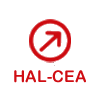New biocatalytic lactamization: Caprolactam production scale-up and exploration of industrial purification methodologies
Résumé
Lactams are well-known chemical scaffolds with a wide range of applications in pharmaceutical (active pharmaceutical ingredients, APIs) and polymer chemistry (precursors to nylons).[1] In conventional chemistry, lactams can be synthesized using harsh reaction conditions and stoichiometric amounts of reagents, leading to poor atom economy. Biocatalysis offers a more efficient, versatile, sustainable, and safe alternative for industrial applications. However, such approaches for amide bond formation have been used with naked lactams, resulted in poor yields or implemented with reaction conditions incompatible with large-scale processes.
This study focuses on developing a biocatalytic lactamization process from amino acids using a CoA ligase enzyme. This enzyme can activate a carboxylic acid moiety with ATP, which can result in its condensation with nucleophilic species depending on the media conditions (Scheme 1, A). This carboxylic acid activation has been already describe in presence of an ATP regeneration system.[2] Our primary focus is on optimizing and scaling-up the biocatalytic lactamization, followed by purification of the resulting lactam using membrane technologies (Scheme 1, B).
| Origine | Fichiers produits par l'(les) auteur(s) |
|---|


